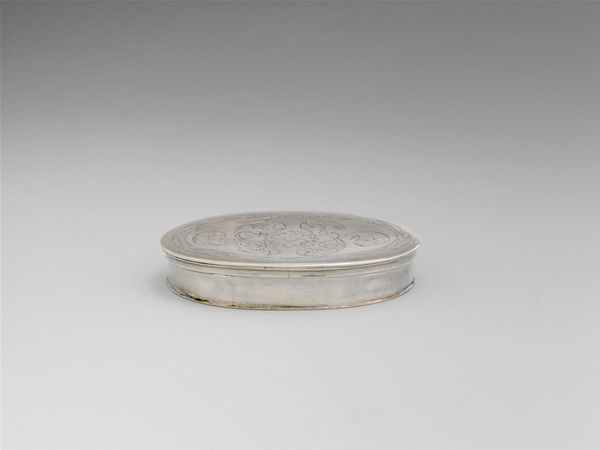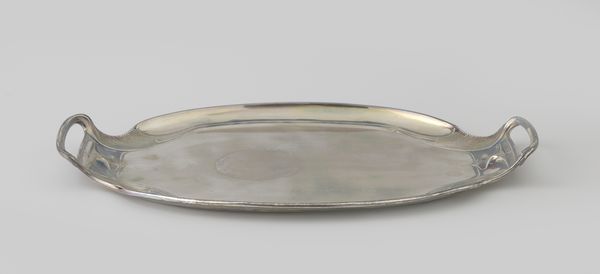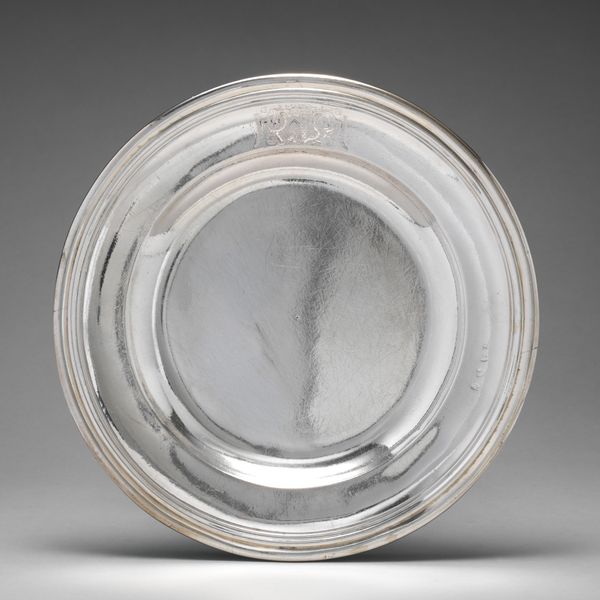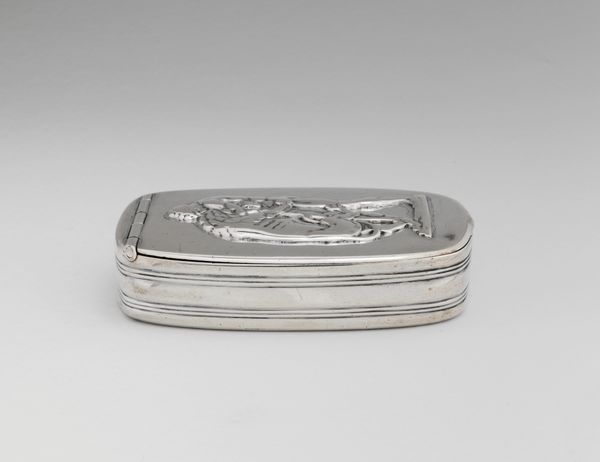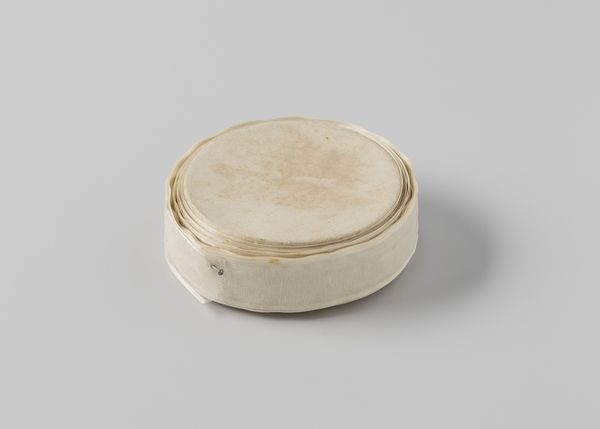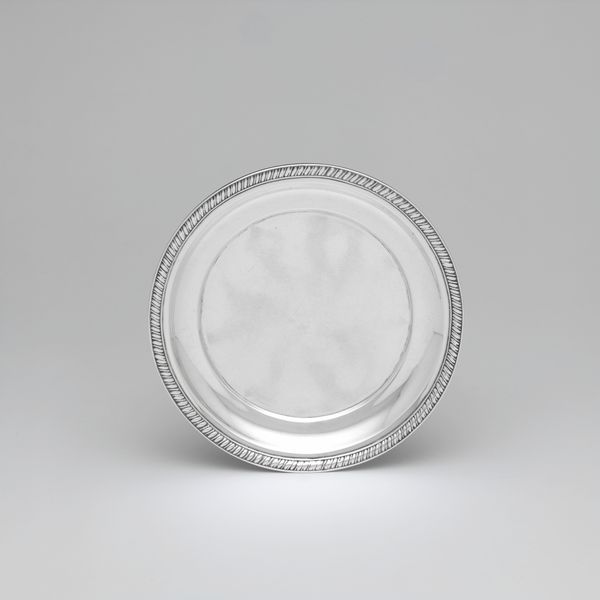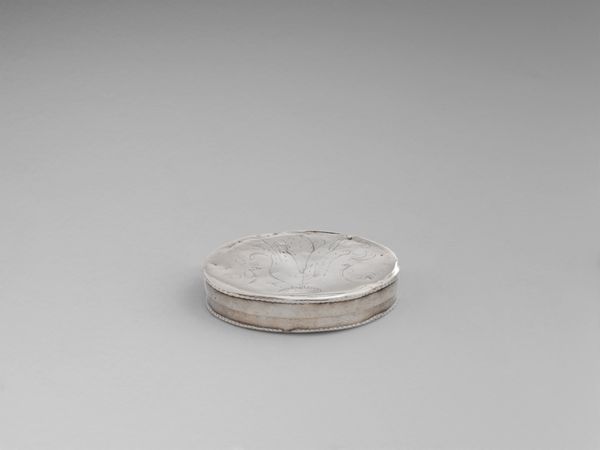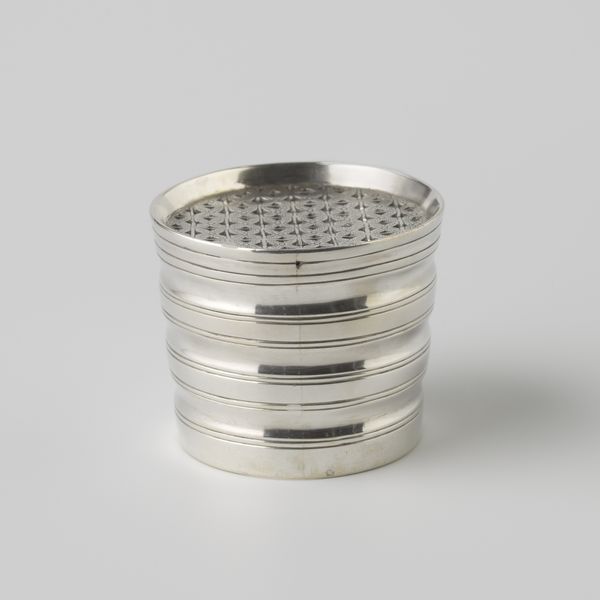
silver, metal
#
silver
#
metal
#
decorative-art
Dimensions: Overall: 1 x 4 1/2 x 3 3/8 in. (2.5 x 11.4 x 8.6 cm); 7 oz. 6 dwt. (227.4 g) Body: 4 oz. 6 dwt. (133.7 g) Cover: 3 oz. (93.7 g)
Copyright: Public Domain
Editor: This is a silver tobacco box, crafted sometime between 1725 and 1745, attributed to Samuel Burrill. It’s quite simple, but elegant in its form, and the material has this appealing sheen. How do you see its value as an object of art? Curator: Initially, consider its geometrical underpinnings. The piece consists of a horizontally-oriented ellipse – a flattened circle – completed by bands of concentric lines that reinforce this curvature. Further, how do these base formal elements contrast with the etched circle and the floral and figural motifs on the lid’s surface? Do you discern any symbolic relationships among the different compositional layers? Editor: Well, the floral pattern certainly draws the eye, doesn’t it? Does the decorative art style connect with other movements or broader decorative tendencies from its time? Curator: The "decorative art" label denotes that it primarily emphasizes aesthetic ornamentation. Can we then investigate the nature of this "ornamentation" via its line work, material and how its creator manipulated the material's surface to generate texture? How do all these properties cohere, both internally as an autonomous object, and as a member of a family of similar such objects? Editor: It seems its beauty exists in its refined details and execution. The engraved details become crucial, not just as additions, but intrinsic to the piece's merit. Curator: Precisely! We should understand it through a framework of self-referential relations within its aesthetic experience, its art historical background, and the broader scope of intellectual theory. Editor: I see it now; by analyzing the internal composition of line and form and the relationship between these qualities of silver, we can access deeper layers of design intent, cultural meaning, and aesthetic understanding. Thanks for expanding my perspective. Curator: Indeed. Looking closely at these core components gives the object its art value.
Comments
No comments
Be the first to comment and join the conversation on the ultimate creative platform.

